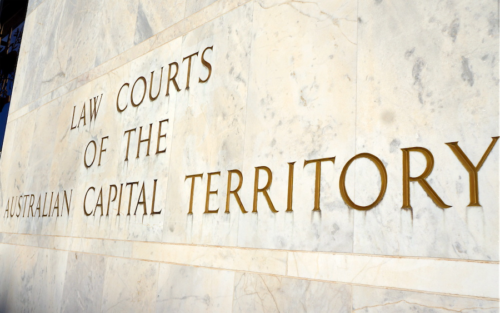“The screw principle was known in antiquity. The ancients used wooden screws for crushing grapes, drawing water and fastening planks of wood for shipbuilding and other purposes,” writes “Whimsy” columnist CLIVE WILLIAMS.
THEY’RE one of humans’ most important needs – we have lots of them at home, and without them our standard of living would not be the same. I speak, of course, of the humble screw.

We take them for granted, but they are a very clever invention. A screw is typically made of metal and characterised by a helical ridge, called a male external thread.
Screws are often self-threading, creating an internal thread in the screwed material that helps pull fastened materials together. There are many screws for a variety of purposes; materials commonly fastened by screws include wood, metal, and plastic.
Bolts by contrast have a constant width screw thread that screws into a matching part, commonly known as a nut. Hence the terms nuts and bolts. I recall at school being told of someone who came from an engineering family – the father was nuts and the mother had bolted.
The screw principle was known in antiquity. The ancients used wooden screws for crushing grapes, drawing water and fastening planks of wood for shipbuilding and other purposes.

The metal screw did not become common until machine tools for their mass production were developed toward the end of the 18th century. Throughout the 19th century, the most common screw heads were simple straight slots.
The inventor of the Phillips crosshead screw was John P Thompson who, in 1932, patented a “recessed cruciform screw”. He sold the patent to Henry Frank Phillips, an American businessman from Portland, Oregon, who developed the concept and manufactured them.
If you find an alleged antique – such as a cast-iron, mechanical bank – held together with Phillips screws, it can’t be older than the 1930s.
The most common screw heads today are Phillips (Crosshead), slotted (straight groove), hex (Hexagonal hole), Pozi (Pozidriv – an improved Phillips), Robertson (Square hole), and Torx (Star-shaped hole).
“Screw” can of course have other meanings.
A screw can be:
- A small amount of tobacco, salt, etcetera in a twist of paper.
- An unsound or worn-out horse.
- A ship’s or boat’s propeller.
- A salary – as with, “He’s on a good screw”.
- A prison warder.
And in phrases:
- “To screw someone” is a slang expression meaning to cheat someone.
- “I’m totally screwed” means you have no recourse whatsoever, “up the Puhoi without a peddle”, so to speak.
- “To screw” can also be used in a vulgar sense meaning to have sexual intercourse. “Screwing around” means having sex with multiple partners.
- “To screw one’s face up” is to twist it out of its natural shape or contort it (such as after taking foul medicine).
- “To screw up” is to make a mess of something by ineptness or bungling. (The experienced carpenter nailed it, but the new guy screwed it up.)
- “To screw around” is to mess about and waste time.
- “To have a screw loose” is to be eccentric, odd, etcetera.
- “To screw kick” is to miskick a ball.
- “To put the screws on” is to apply pressure, to subject to force; exert pressure on someone, as in exacting payment.
- “To screw on” means to twist or rotate something in order to attach or tighten it. An example is when you screw a top back on a bottle or jar.
Context is obviously important when you use screw in a phrase! Anyway, for something “light” to end up on:
How many IT guys does it take to screw in a lightbulb? None. It’s a hardware problem.
How many Microsoft executives does it take to screw in a lightbulb? None. They’d just redefine “darkness” as the industry standard.
How many Donald Trump fans does it take to screw in a lightbulb? None. They prefer to stay in the dark.
How many conspiracy theorists does it take to screw in a light bulb? Who knows? They doubt there’s even a light bulb.
Who can be trusted?
In a world of spin and confusion, there’s never been a more important time to support independent journalism in Canberra.
If you trust our work online and want to enforce the power of independent voices, I invite you to make a small contribution.
Every dollar of support is invested back into our journalism to help keep citynews.com.au strong and free.
Thank you,
Ian Meikle, editor





Leave a Reply